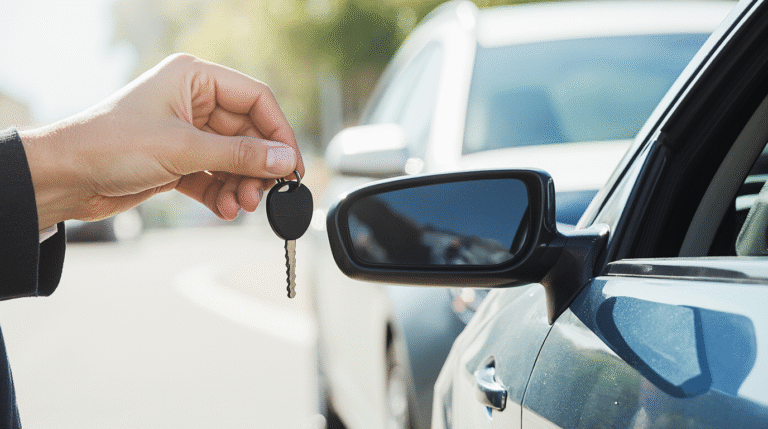Minimum Car Insurance Coverage California: 5 Key Facts
Driving down the Pacific Coast Highway or navigating the busy streets of Los Angeles is a way of life in California. But with all that driving comes big responsibility. You need to have car insurance. It’s the law. But do you know if your current policy meets the bare legal requirements? It’s a question every driver should ask.
This guide is here to help. We will break down the five key facts you must know about the state’s car insurance rules. Understanding your minimum car insurance coverage california requires is the first step to being a safe and responsible driver. Let’s get started on this simple guide to the California minimum car insurance.
Table of Contents
What is the Minimum Car Insurance Coverage California Requires?
So, what exactly does the state of California make you have? The law is very clear. It’s often called the “15/30/5” rule. This might sound like a code, but it’s simple once you break it down.
This minimum car insurance coverage california law requires three types of liability insurance. Think of liability as coverage for the other guy if you cause a crash. Here’s what those numbers mean for your basic car insurance in California:
- $15,000 for bodily injury per person: This is the most your insurance will pay for one person hurt in an accident you cause.
- $30,000 for total bodily injury per accident: This is the total limit for all people hurt in one accident you cause.
- $5,000 for property damage per accident: This covers damage you cause to someone else’s property, like their car, fence, or mailbox.
That’s it. That is the absolute least amount of insurance you can legally have to drive in California. This basic car insurance in California keeps you legal, but is it enough? Let’s find out.
Fact 1: It’s the Absolute Legal Bare Minimum
The most important thing to know is that “minimum” means just that. It is the lowest level you can go without breaking the law. It is not a suggestion. It is not what insurance experts recommend for good protection. It is simply the legal floor.
Why does this matter? California is an expensive state. Medical bills can be huge. The cost of a new car is high. If you cause a serious accident, the costs can fly past these low limits in a heartbeat. Sticking strictly to the minimum car insurance coverage california mandates can leave you financially vulnerable. If the bills are $100,000 and your limit is $30,000, you could be personally sued for the remaining $70,000. That could mean your wages or savings are at risk.
Fact 2: Liability-Only Doesn’t Cover Your Own Vehicle
This is a surprise to many people. The state’s minimum car insurance coverage california requirement is for liability-only insurance. Let’s be clear about what “liability” means. It covers costs for the other party when you are at fault in an accident.
Here is what your basic liability policy does NOT cover:
- Your own hospital bills.
- Repairs to your own car.
- Theft of your car.
- Damage from a fire, hail, or a fallen tree.
If you crash into a pole and you’re at fault, your minimum liability policy won’t pay a dime to fix your car. For that, you would need extra coverage like collision and comprehensive insurance. While not required by law, they are crucial for protecting your own vehicle.
Fact 3: Proof of Insurance is Mandatory (The Electronic Rule)
Having insurance isn’t enough. You also have to be able to prove you have it. This is California’s financial responsibility law. You must carry proof of your minimum car insurance coverage california in your vehicle at all times.
The good news is that California accepts electronic proof. You can show your insurance card on your smartphone. A paper card works just fine, too.
But what happens if you get pulled over or in an accident and can’t show proof? The penalties are steep:
- A fine of several hundred dollars for a first offense.
- Your car could be impounded.
- Repeat offenses lead to even larger fines and a suspended license.
Fact 4: You Have Other Financial Responsibility Options
Did you know you have other ways to meet the state’s requirement? Besides buying a standard policy, you can show financial responsibility by:
- Putting down a $35,000 cash deposit with the DMV.
- Getting a surety bond from a company licensed in California.
- Qualifying as a self-insurer (mainly for large companies with many vehicles).
For most everyday drivers, these options are not practical. Putting down $35,000 in cash is not possible for most people. A standard insurance policy is by far the easiest, most common, and most affordable way to meet the minimum car insurance coverage california law and get the proof you need.
Fact 5: Minimum Coverage Often Isn’t Enough Protection
This is the biggest takeaway. The minimum car insurance coverage california requires is often not enough to protect you from big bills. Let’s look at a simple example.
Imagine you cause a small fender-bender. You hit a brand-new truck. The damage doesn’t look bad, but the truck has a cracked bumper and new sensors. The repair bill comes to $8,000. Remember, your property damage limit is only $5,000. Your insurance would pay up to that limit, and you would be personally responsible for the remaining $3,000.
Now imagine an accident with injuries. Hospital costs can run into the tens or hundreds of thousands of dollars. Your $30,000 total limit could be used up very fast. This is why insurance experts always suggest getting higher liability limits. It doesn’t cost much more, but it provides a lot more peace of mind and financial safety.
Frequently Asked Questions
Let’s answer some common questions about the minimum car insurance coverage california drivers need.
What happens if I drive with less than the minimum car insurance coverage in California?
Driving without the required minimum car insurance coverage california is a serious offense. You face heavy fines, your car could be impounded, and your driver’s license could be suspended. It is a big risk that is not worth taking.
Is minimum coverage the cheapest car insurance in California?
Yes, a liability-only policy that just meets the state’s minimum car insurance coverage california requirements is typically the cheapest car insurance policy you can buy. It has the lowest premiums because it offers the least amount of protection for you and the insurance company.
Should I ever only have the state minimum car insurance?
This is a personal choice, but it is often not a wise one. The state minimum might be okay if you have an old car with very low value and few personal assets to protect. However, for most drivers, it is a big financial risk. It is better to think of the minimum as a starting point, not the finish line.
Final Thoughts on Staying Protected
You are now an expert on the minimum car insurance coverage california law. Let’s review the five key facts:
- It is the absolute legal bare minimum.
- It is liability-only and does not cover your own car.
- You must have proof of it with you at all times.
- There are other options, but a standard policy is best for most.
- It often is not enough to protect you from big costs.
Knowing the law is the first step. Protecting your financial future is the next. Don’t just settle for the bare minimum. Take a moment to review your current policy right now. Are your limits high enough to protect your savings and your future? If you’re not sure, it’s always a great idea to talk to an insurance agent. Get a new quote today to see how affordable it can be to get the real protection you and your family deserve.


